Navigation
Install the app
How to install the app on iOS
Follow along with the video below to see how to install our site as a web app on your home screen.
Note: This feature may not be available in some browsers.
More options
Style variation
You are using an out of date browser. It may not display this or other websites correctly.
You should upgrade or use an alternative browser.
You should upgrade or use an alternative browser.
China Auto Thread
- Thread starter StraightEdge
- Start date
Yommie
Elite Member
- Oct 2, 2013
- 63,909
- 37,180
- Country of Origin

- Country of Residence

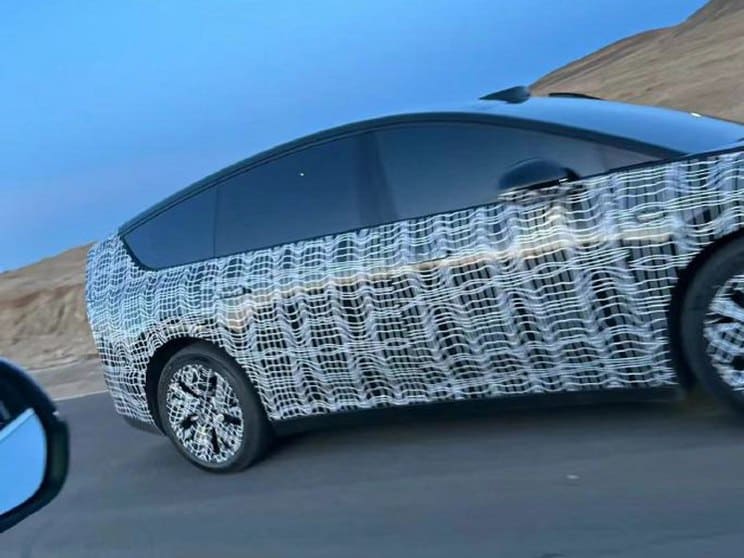
Li Auto’s first fully electric SUV spied
Li Auto's first all electric SUV has been spied testing in China and it looks very much like an SUV version of the Mega.
 carnewschina.com
carnewschina.com
Li Auto’s first fully electric SUV spied
Reading Time: 3 minutes
Mark Andrews
April 24, 2024
1
 Li Auto first all-electric SUV spy shot
Li Auto first all-electric SUV spy shotNews like this to your inbox or phone?
Weekly summary to your inbox
I want this
Never miss and important news
Get Instant notification once the news is published.
Follow Us
Li Auto plan to launch four all-electric cars this year. Of those the Mega has already launched and the remainder are SUVs believed to be named M9, M8 and M7. There is a very small chance we may see one at the Beijing Auto Show, but new spy shots have already emerged of what is likely the M9 or perhaps M8.
We can see from the spy shots that the new car has similar styling to the Mega but is considerably smaller. Gone is the sliding side door replaced with a more normal SUV like door. At the front it uses similar design language to the L-series SUVs and has a star ring LED light strip. There is a roof mounted Lidar unit and overall the front overhang is kept to a minimum. The triangular window in the A-pillar is much smaller than on the Mega and also the height reduces far quicker after the B-pillar. At the rear there is a light bar across the tailgate and the number plate is now on the bumper.
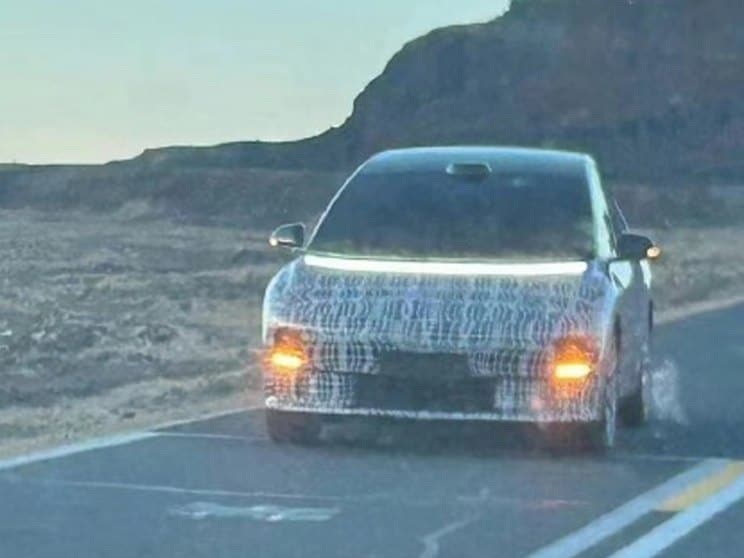
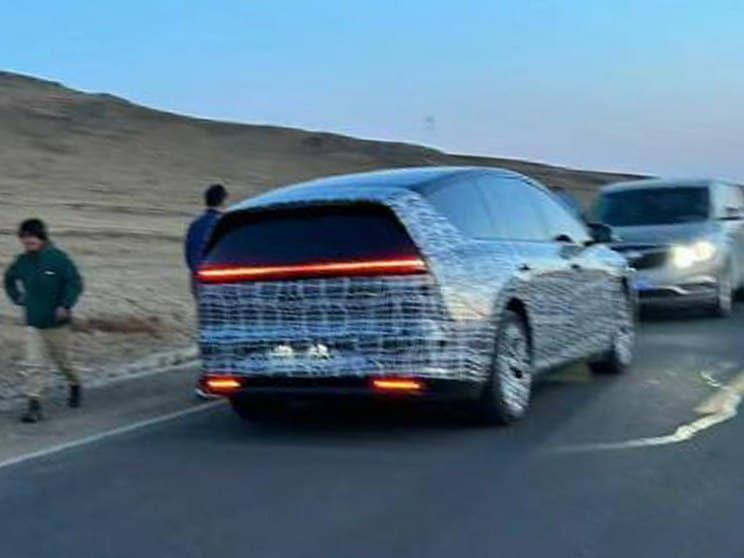 More spy shots of the all-electric Li SUV
More spy shots of the all-electric Li SUVIt is expected that the three new SUVs will use the same high-voltage pure electric platform as the Mega and that they will have 800V architecture and support 5C supercharging. Li Xiang, Li Auto’s CEO, has previously said that the cars will come with 5C batteries as standard. If the launch plan is to be believed we should see the new car soon.
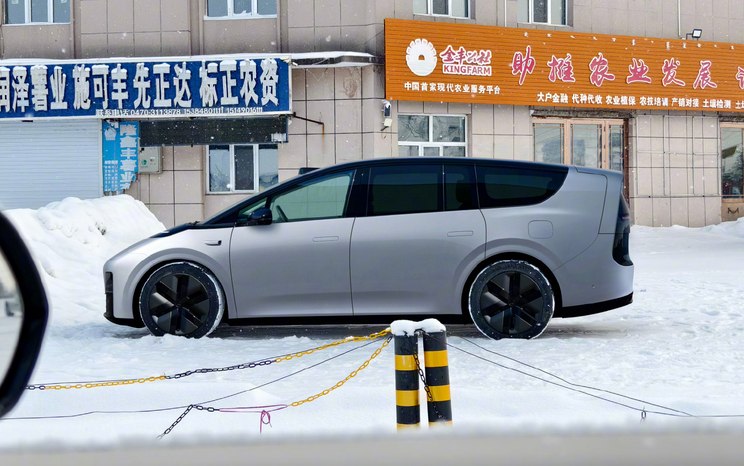 Rendering by Oude Wang of what the SUV might look like.
Rendering by Oude Wang of what the SUV might look like.By the end of 2025 Li Auto’s product plan calls for the range to consist of 5 extended range models, the super flagship Mega, and five pure electric models. Currently Li Auto has drawn a line at 200,000 yuan (27,600 USD) for starting prices of their cars. Li Auto is already exporting to some markets including Russia and a more concerted export push must be imminent.
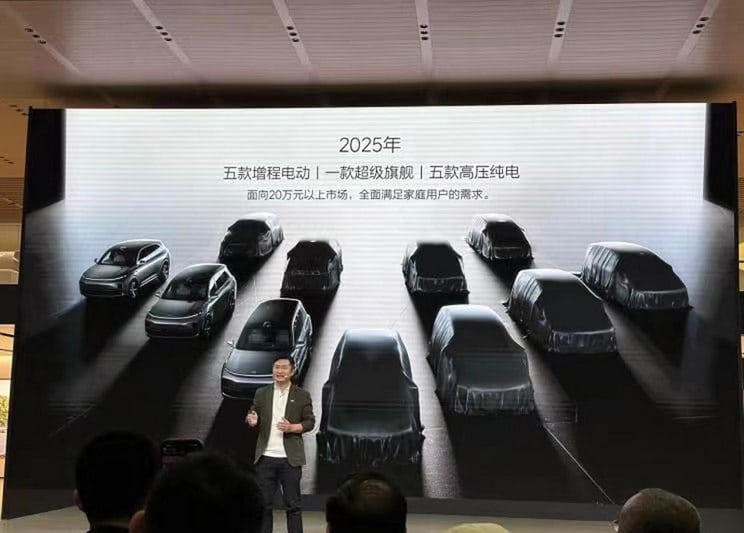 Previously displayed Li Auto product plan for 2025
Previously displayed Li Auto product plan for 2025Editor’s note:
Li Auto until the Mega could do no wrong but the Mega has been quite polarizing. Having the new SUV looking so much like a Mega will definitely make it distinctive but will also likely turn off a lot of buyers.Perhaps one reason Li Auto’s L series of EREVs has been so successful is that they are very inoffensive with a smooth stereotypical SUV look, the same cannot be said for the spy shots of this car. The rendered picture based on an older spy shot seems some way off what the real car will look like as it doesn’t seem to rake down at the back nearly as much as with the car in the spy shots.
Sources: Autohome, Fast Technology
Yommie
Elite Member
- Oct 2, 2013
- 63,909
- 37,180
- Country of Origin

- Country of Residence

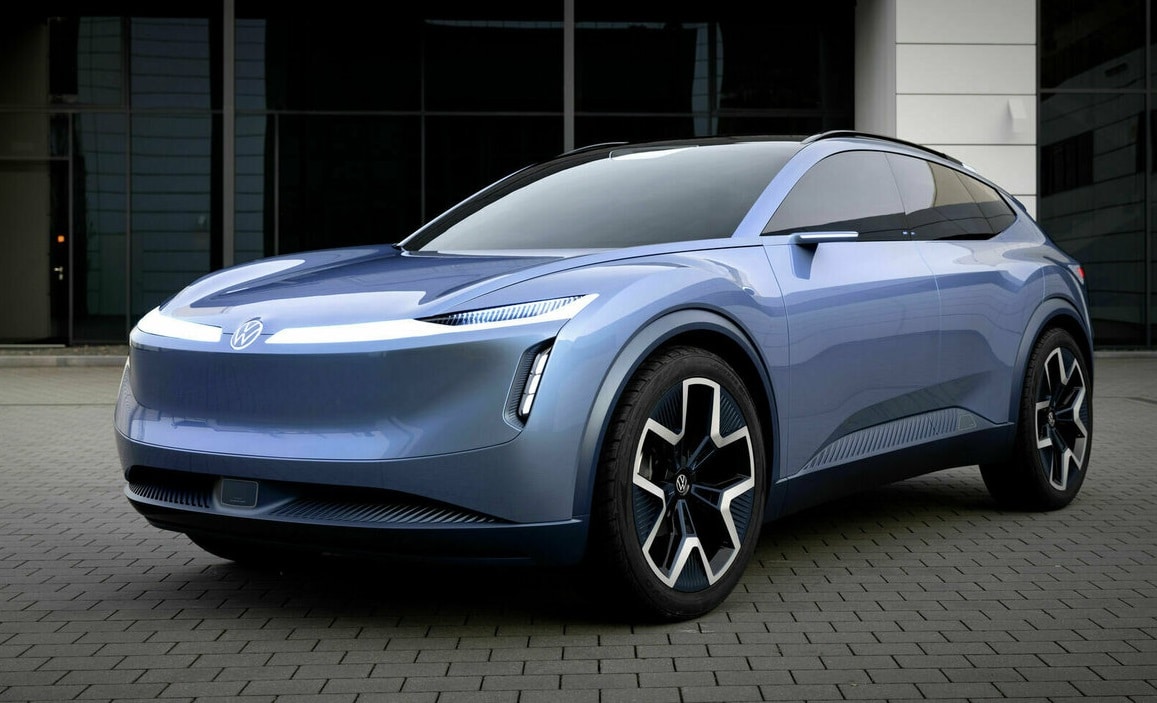
Volkswagen unveils ID. Code 01 SUV with new “Chinese DNA” and L4 autonomous driving
The steering wheel will hide into the dashboard when AD is activated.
 carnewschina.com
carnewschina.com
Volkswagen unveils ID. Code 01 SUV with new “Chinese DNA” and L4 autonomous driving
Reading Time: 3 minutes
Jiri Opletal
April 24, 2024
0
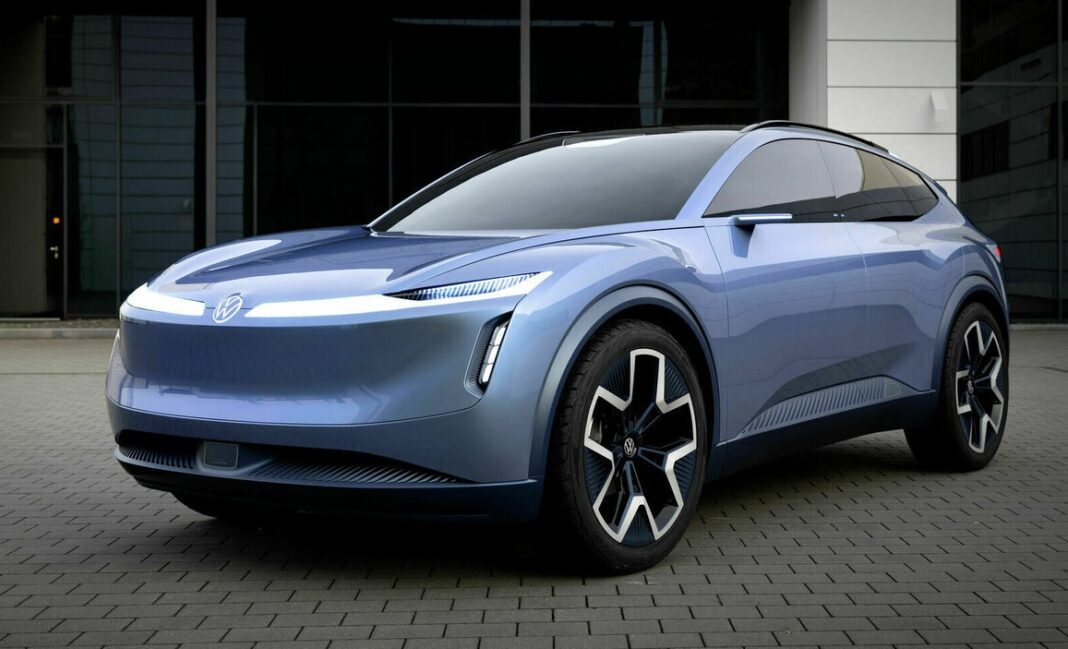 Volkswagen ID. Code 01. Credit: VW
Volkswagen ID. Code 01. Credit: VWNews like this to your inbox or phone?
Weekly summary to your inbox
I want this
Never miss and important news
Get Instant notification once the news is published.
Follow Us
Volkswagen unveiled ID. Code 01 electric SUV ahead of its public debut at the Beijing Auto Show on April 25. It is designed for L4 autonomous driving, has a built-in robotic vacuum cleaner, and aims at young buyers. Volkswagen says the car has the new Chinese DNA as it follows the “in China for China strategy.”
ID. Code 01 is a design show car that Volkswagen will use as a concept for its future ID. lineup in China. According to Volkswagen, the steering wheel can retract into the dashboard when autonomous driving mode is activated, as the L4 is the second highest AD level which doesn’t need driver intervention.
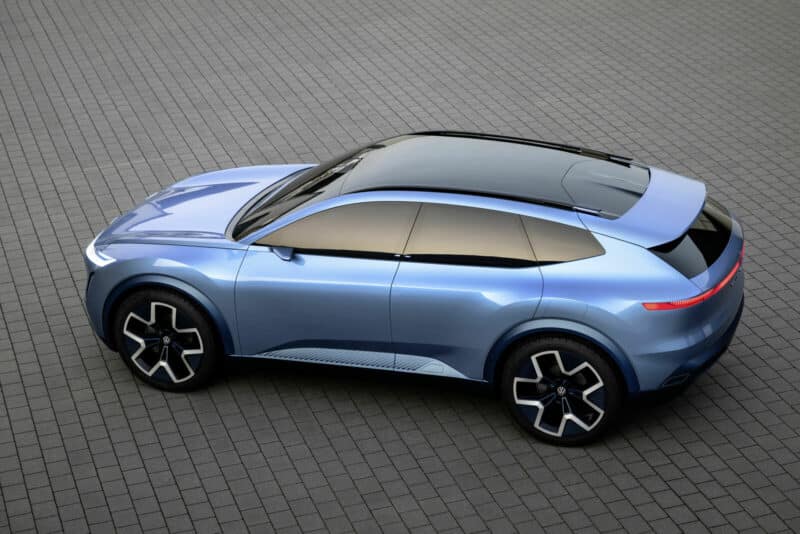
The dashboard is also home to LUPO – a robotic vacuum cleaner, something like Mi Robot from Xiaomi but smaller and not intended for households. Once the car is put into Hygiene mode, the LUPO will crawl out and start cleaning up the vehicle. It also disinfects the surfaces with UV light.
LUPO – robotic vacuum cleaner.
“The ID. CODE gives a first preview of the future of VW in China: with a new design, a new technology standard, and a holistic brand experience specifically oriented to our Chinese customers’ needs and wishes. We are ushering in a new era of mobility in China with our Chinese partners.” Thomas Schäfer, CEO of the Volkswagen brand, said.
According to VW, the ID. Code design was developed specifically for customers in China and is a reminiscence of Gran Turismo.
The ID. family will grow to a total of 16 models by 2023. VW currently builds its ID. EVs on the MEB platform; however, this will change soon. Volkswagen is developing two new mid-class cars based on the electric platform it licensed from Chinese EV startup Xpeng. The first Xpeng-co-engineered vehicles will be launched in 2026, and the platform is supposed to be based on Edward architecture, which was underpinning the 2022 Xpeng G9.
Furthermore, Volkswagen China Technology Company (VCTC) is developing another electric platform specifically for China: CMP (China Main Plattform). At least four additional models for the electric entry-level segment will be built on the CMP from 2026.
Volkswagen China will also launch the ID.UX subbrand next year, aimed at young customers. The first EV will be called ID.UNYX and will debut this year.
You can watch the official unveiling of ID. Code 01 in Beijing here.
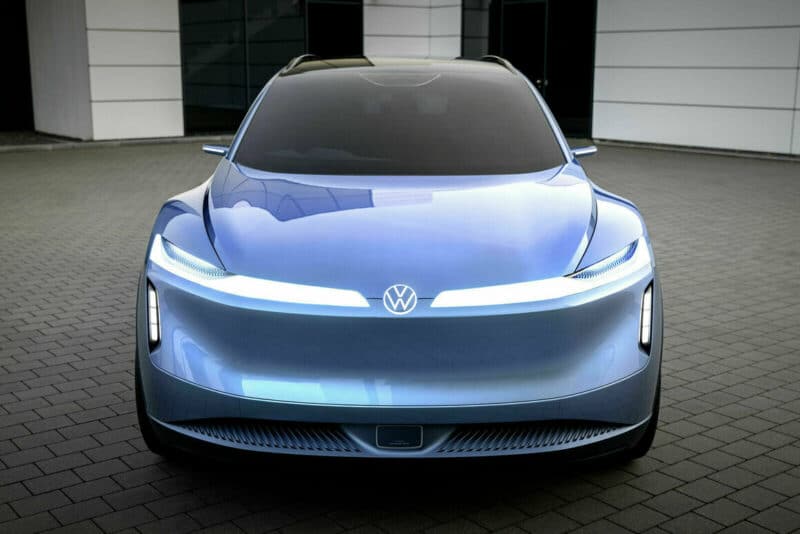

Yommie
Elite Member
- Oct 2, 2013
- 63,909
- 37,180
- Country of Origin

- Country of Residence


Huawei Qiankun ADS 3.0 announced, brings intelligent driving upgrade
Huawei announces its new Qiankun ADS 3.0 system with industry leading intelligent driving functions due on cars in 2024.
 carnewschina.com
carnewschina.com
Huawei Qiankun ADS 3.0 announced, brings intelligent driving upgrade
Reading Time: 3 minutes
Mark Andrews
April 24, 2024
0

News like this to your inbox or phone?
Weekly summary to your inbox
I want this
Never miss and important news
Get Instant notification once the news is published.
Follow Us
On the eve of the Beijing Auto Show Huawei held its Intelligent Vehicle Solution Conference and notably unveiled its new intelligent driving brand Qiankun. The name is to do with strength and self-improvement of the sky implying an upward breakthrough and leading the future. It forms part of Huawei’s intelligent vehicle solutions package and should begin to be used by partners soon.
Jin Yuzhi, CEO of Huawei’s Intelligent Solutions business unit, announced the launch of Qiankun ADS 3.0 intelligent driving system at the event giving a new name for the ADS system. The previous version was simply known as Huawei ADS 2.0 and the new Qiankun ADS 3.0 represents a comprehensive upgrade and evolution of the system in terms of mapless intelligent driving, collision avoidance and all-scenario parking.
Road and scene recognition in ADS 3.0 is vastly improved thanks to cloud and real vehicle training. This allows the system to understand the situation and make decisions closer to an experienced human driver. ADS 3.0 sees the upgrading to the GOD network (general obstacle detection) which builds upon the architecture seen with bird’s eye view (BEV) network and GOD network seen in ADS 2.0.
 Qiankun introduction poster
Qiankun introduction posterCritically Huawei says that Qiankun ADS 3.0 is the industry’s first product to allow Navigation Cruise Assist (NCA) from parking space to parking space. Yesterday we brought you news of the Luxeed S7’s new parking capability and this we now know is part of the Qiankun upgrade. Qiankun 3.0 allows the driver to get out of the car and walk away immediately after selecting the target parking space. The system supports parking in all visible parking spaces and is not restricted to certain types.
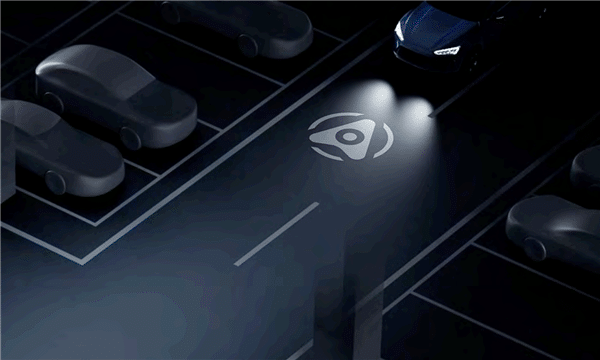 Qiankun self parking concept
Qiankun self parking conceptAlso included as part of the upgrade to Qiankun ADS 3.0 are improved capabilities for the omnidirectional collision avoidance system (CAS) to CAS 2.0 standard. Specifically the improvements involve front, rear and side collision avoidance. It’s claimed that an Aito M9 fitted with CAS 2.0 in a test performs better than comparable models in various scenarios including pedestrian crossing, and meeting a pedestrian when turning left.
These are all capabilities of the high-end version which is dependent on Lidar, there is also a Qiankun SE version for non-Lidar equipped vehicles which presumably replaces the Huawei ADS Basic Intelligent Driving system currently offered.
Also making up part of the Qiankun brand are the Qiankun iDVP intelligent vehicle digital platform, Qiankun Vehicle Control Module, and XMotion 2.0 Body Motion Collaborative Control. Huawei claim that the Qiankun vehicle control module is the world’s first 5-in-1 vehicle control SoC (system on chip) leading technology in terms of its high integration, high performance, low latency, high reliability and high security. Meanwhile, the XMotion 2.0 system uses 6D vehicle motion algorithms to improve driving performance and bring a better driving experience. It provides stability control at speeds up to 120 km/h and can keep the car stable during events such as punctures, high-speed obstacle avoidance and can achieve a speed of 84 km/h in the moose test. Adaptive slip control means that a car fitted with the system on a slippery road does not skid, push out the head or flick the tail.
Huawei said at the conference that the system this year would find a home in 10 ‘new’ models to be launched in 2024 from brands including Dongfeng, Changan, GAC, BAIC, Aito, Chery and JAC.
Upgrades to the HarmonyOS cockpit system were also announced at the conference.
Sources: Autohome, Fast Technology
Yommie
Elite Member
- Oct 2, 2013
- 63,909
- 37,180
- Country of Origin

- Country of Residence

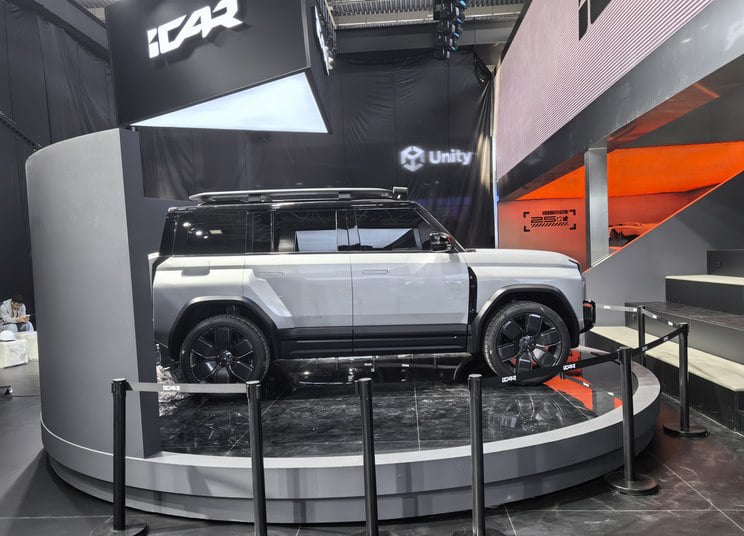
Chery iCar 03T spied at the Beijing Auto Show
Chery iCar 03T spied on the Chery booth at the Beijing Auto Show ahead of tomorrow's unveiling. Car gets an off-road upgrade.
 carnewschina.com
carnewschina.com
Chery iCar 03T spied at the Beijing Auto Show
Reading Time: 3 minutes
Mark Andrews
April 24, 2024
0
 Chery iCar 03T spied at Beijing Auto Show
Chery iCar 03T spied at Beijing Auto ShowNews like this to your inbox or phone?
Weekly summary to your inbox
I want this
Never miss and important news
Get Instant notification once the news is published.
Follow Us
On the eve of the Beijing Auto Show we’ve already snagged some pictures of the new Chery iCar 03T on the Chery booth before the show opens tomorrow (April 25). The Chery iCar 03T is a modified and upgraded version of the iCar 03 which went on sale earlier this year.
There was a time that T on a car’s name meant turbo but the iCar 03T is all electric, possibly the T stands for terrain given it is an SUV. Anyway, please let us know in the comments what you think the T stands for!
As you can see from the pictures the iCar 03T is chunkier than the regular car and also it rides 15 mm higher. Dimensions are 4432, 1916 and 1741 mm (l/w/h) with the wheelbase being 2715 mm. Not only does the car get a new wider front bumper but the wheel arches are also bigger. In those arches are new black wheels shod with 11 mm wider tires. Ground clearance is now 200 mm and the approach, departure and passing angles are 28, 31, and 20 degrees respectively. Although the spy shots didn’t extend to the rear, teaser images show that the iCar 03T gains a new off-road style rear bumper.

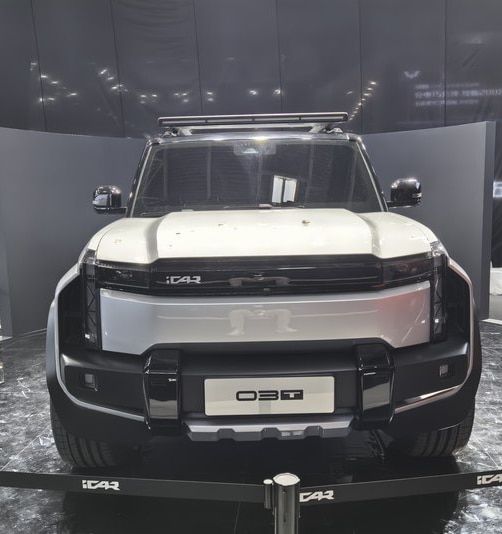

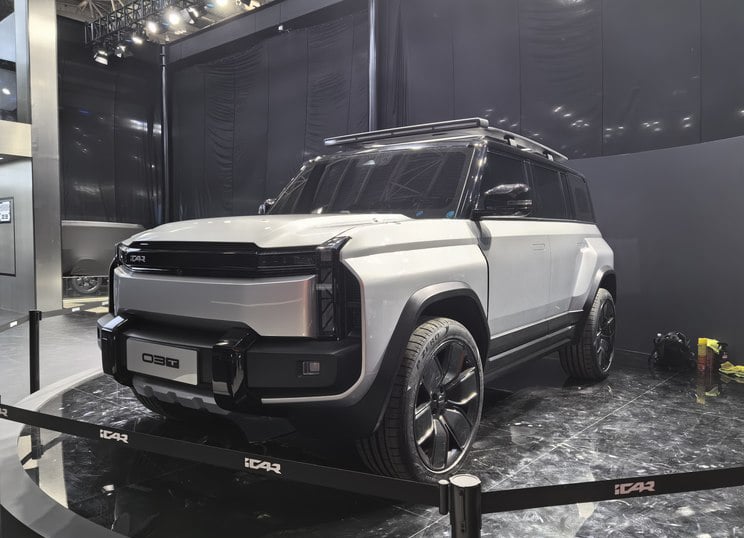
On the roof is a rack complete with a front illumination strip. There are no pictures of the interior but there are meant to be upgrades to the intelligent cockpit.
Chery iCar 03T teaser pictures
Both single motor and dual motor versions of the iCar 03T exist and these seem to have exactly the same setup as with the standard car. Single motor versions have a 135 kW motor on the rear axle with maximum torque of 220 Nm. All-wheel drive versions add an additional 70 kW motor to the front axle with 165 Nm of torque. Battery specifications have not been announced but Chery claims the car has more than 500 km range. Currently only the 4WD versions of the iCar 03 achieve such a range using a 69.77 kWh battery meaning that battery of the iCar 03T will be either the same size or larger. Acceleration time for 0-100 km/h is 6.5 seconds. Upgrades are also meant to have been carried out on the intelligent all-wheel drive system.
The Chery iCar 03T will unveil officially tomorrow at the 2024 Beijing Auto Show.
Source: Autohome, Fast Technology
Yommie
Elite Member
- Oct 2, 2013
- 63,909
- 37,180
- Country of Origin

- Country of Residence

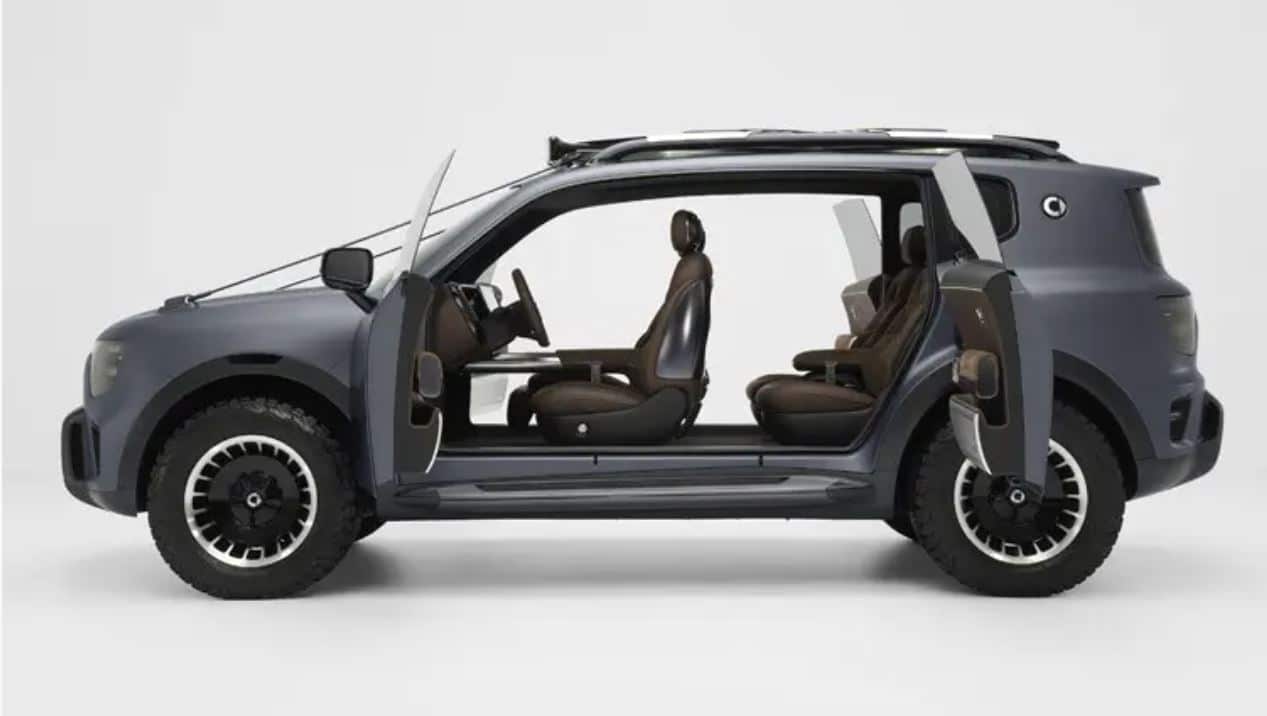
Smart #5 concept SUV spotted at Beijing Auto Show
The Smart #5 pure electric concept car may have a 700 km CLTC cruising range. #BeijingAutoShow2024
 carnewschina.com
carnewschina.com
Smart #5 concept SUV spotted at Beijing Auto Show
Reading Time: 3 minutes
Dong Yi Chen
April 24, 2024
0

News like this to your inbox or phone?
Weekly summary to your inbox
I want this
Never miss and important news
Get Instant notification once the news is published.
Follow Us
With the Beijing Auto Show around the corner, Smart’s #5 concept car, positioned as a medium-sized pure electric SUV, was spotted onsite. The production model is expected to launch in the second half of this year.
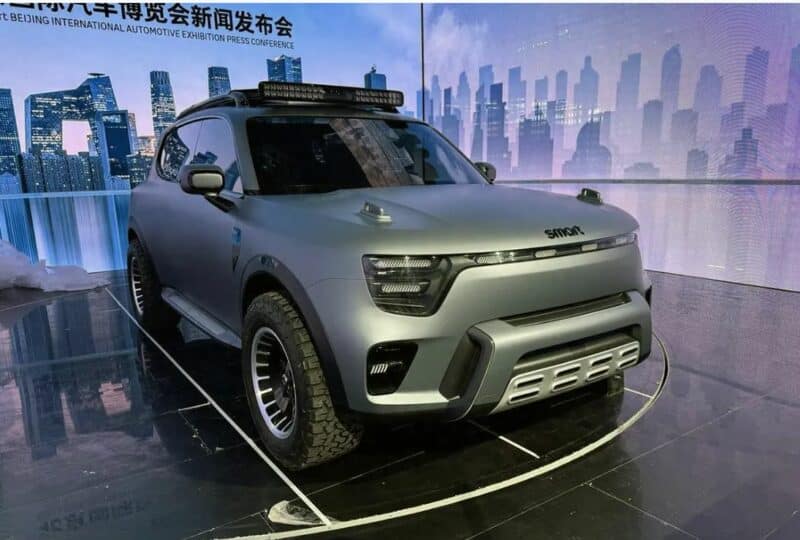
The size of the concept car measures 4700/2160/1870 mm, which is also the largest model within the Smart series.
Both the front and rear feature a “time capsule” light strip design. On the roof, the car is equipped with spotlights for outdoor explorations.
The concept car also has small design details such as a small LCD screen on the wheel arch that displays tire pressure and a screen on the front fender that shows the door lock status.
It is worth pointing out that the Smart #5 concept car will be equipped with the “Smart mobile cinema”, which comes with a full-color projector on the front of the car.
Power will come from an intelligent four-wheel drive system with dual electric motors and a lithium-based battery pack with more than 100 kWh capacity, providing a 700 km CLTC cruising range or 550 km WLTC cruising range, according to Chinese media d1ev. At the same time, with the support of an 800V high-voltage platform and 4C ultra-fast charging, it takes 15 minutes to replenish the battery to 70%.
Furthermore, several driving modes will be supported including off-road, sand, snow, mud, and rock.
Coming to the interior, the cockpit features a triple-screen design, powered by a built-in AMD V2000 chip, and a portable high-fidelity speaker. In addition, voice recognition will be supported in which the passengers can converse with an onboard intelligent assistant to control the vehicle. The vehicle may also be equipped with the NVIDIA DRIVE Orin chip to power the smart Pilot Assist 3.0 advanced driving assistance system.
The interior adopts a four-seater layout with zero-gravity seats. A five-seater version may also launch in the future.
Source: DongCheDi, d1ev, qctt
Hamartia Antidote
Elite Member
- Nov 17, 2013
- 39,467
- 22,825
- Country of Origin

- Country of Residence

@Yommie
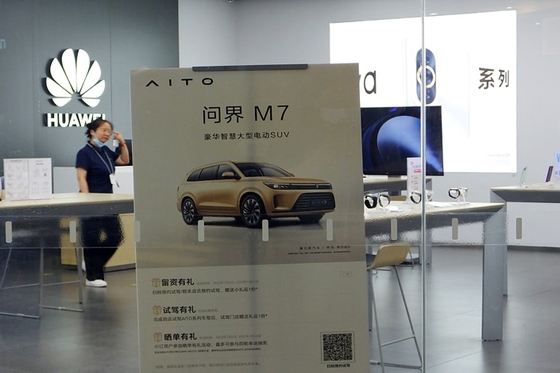
 www.caixinglobal.com
www.caixinglobal.com

Photo: VCG
A fatal car accident involving a Huawei Technologies Co. Ltd. co-branded premium electric vehicle (EV) has tarnished the Chinese tech giant’s attempt to break into the auto market through partnerships with carmakers.
On April 26, an Aito M7 Plus — the result of a collaboration between Huawei and one of its auto partners, Shanghai-traded Seres Group Co. Ltd. (601127.SH) — rear-ended a water truck parked on a highway in Yuncheng, a city in North China’s Shanxi province, resulting in three deaths, including a two-year-old toddler who was in the car.
AITO M7 involved in blaze in North China prompts investigation
AITO Automobile, a Huawei-backed new-energy vehicle brand, said it is actively investigating the incident in collaboration with the local traffic police department after a serious traffic accident took place in Yuncheng, North China's Shanxi Province.
The announcement came after a Huawei AITO M7 burst into flames after crashing into a sprinkler truck on a highway on Friday afternoon in the city, killing all three passengers on board, including a 2-year-old boy, according to chinanews.com.cn.
The company is actively cooperating with the local traffic police department to conduct accident investigations, providing all necessary data to reconstruct the cause of the accident, and offering all possible support to the families of those involved, said AITO in a statement released on its WeChat public account on Sunday.
The automaker said the vehicle was traveling at a speed of 115 km/h at the time of the collision. The safety airbags deployed as intended, and the characteristics of the power battery pack operated normally, it said.
The family is reported to have bought the car just three months before the tragedy, and the exact cause of the accident remains under investigation, domestic media outlet 163.com reported.
The investigation results will be released soon by the local traffic management authority, said AITO.
AITO delivered a total of 31,727 cars in March, maintaining its top position among new emerging automotive brands for the third consecutive month, according to data released by AITO in April.
This figure made it rank first in the new power brands sales franchise including Li Auto and ZEEKR, according to huaweicentral.com.

Fatal Car Crash Mars Huawei’s Efforts to Break Into Electric-Vehicle Market - Caixin Global
Fatal Car Crash Mars Huawei’s Efforts to Break Into Electric-Vehicle Market - The accident involved an Aito M7 Plus, a product of the tech giant’s collaboration with Seres Group, claiming three lives including a toddler
Fatal Car Crash Mars Huawei’s Efforts to Break Into Electric-Vehicle Market

Photo: VCG
A fatal car accident involving a Huawei Technologies Co. Ltd. co-branded premium electric vehicle (EV) has tarnished the Chinese tech giant’s attempt to break into the auto market through partnerships with carmakers.
On April 26, an Aito M7 Plus — the result of a collaboration between Huawei and one of its auto partners, Shanghai-traded Seres Group Co. Ltd. (601127.SH) — rear-ended a water truck parked on a highway in Yuncheng, a city in North China’s Shanxi province, resulting in three deaths, including a two-year-old toddler who was in the car.
AITO M7 involved in blaze in North China prompts investigation
AITO Automobile, a Huawei-backed new-energy vehicle brand, said it is actively investigating the incident in collaboration with the local traffic police department after a serious traffic accident took place in Yuncheng, North China's Shanxi Province.
The announcement came after a Huawei AITO M7 burst into flames after crashing into a sprinkler truck on a highway on Friday afternoon in the city, killing all three passengers on board, including a 2-year-old boy, according to chinanews.com.cn.
The company is actively cooperating with the local traffic police department to conduct accident investigations, providing all necessary data to reconstruct the cause of the accident, and offering all possible support to the families of those involved, said AITO in a statement released on its WeChat public account on Sunday.
The automaker said the vehicle was traveling at a speed of 115 km/h at the time of the collision. The safety airbags deployed as intended, and the characteristics of the power battery pack operated normally, it said.
The family is reported to have bought the car just three months before the tragedy, and the exact cause of the accident remains under investigation, domestic media outlet 163.com reported.
The investigation results will be released soon by the local traffic management authority, said AITO.
AITO delivered a total of 31,727 cars in March, maintaining its top position among new emerging automotive brands for the third consecutive month, according to data released by AITO in April.
This figure made it rank first in the new power brands sales franchise including Li Auto and ZEEKR, according to huaweicentral.com.
Last edited:
Yommie
Elite Member
- Oct 2, 2013
- 63,909
- 37,180
- Country of Origin

- Country of Residence


Voyah outlines new technologies coming to cars soon
Voyah today outlines new technologies coming to its cars at the Voyah Spring Technical Conference held in Beijing.
 carnewschina.com
carnewschina.com
Voyah outlines new technologies coming to cars soon
Reading Time: 3 minutes
Mark Andrews
April 24, 2024
0

News like this to your inbox or phone?
Weekly summary to your inbox
I want this
Never miss and important news
Get Instant notification once the news is published.
Follow Us
Dongfeng brand Voyah today held its Spring Technical Conference in Beijing. Outlined were forthcoming new technologies including 5C super-fast charging, algorithm powered PHEV, new batteries, and 800V platform upgrades.
Upgrades to the Lanhai power 800V platform mean that Voyah claims it has the world’s more efficient 800V electric drive system with an efficiency rate of 92.5% under the CLTC standard. The system has three power modes pure electric, PHEV hybrid and REEV range extension. Voyah says that 800V platform gives vehicles an additional 50 km of range under the same power.
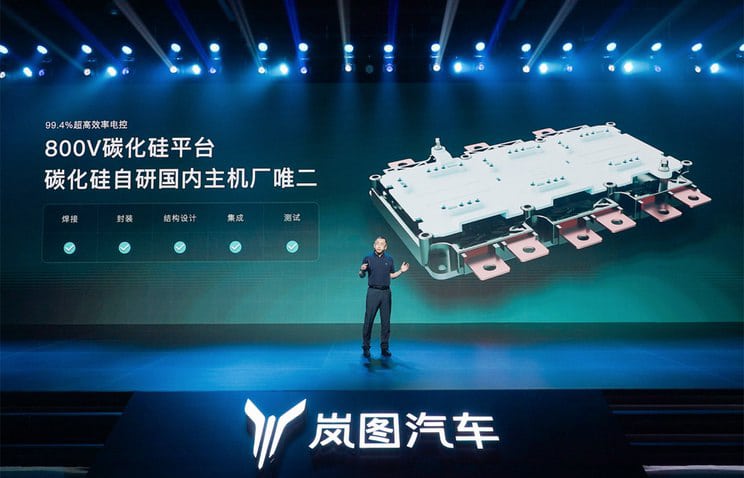 Voyah’s 800V system
Voyah’s 800V systemAn AI algorithm is used by the Lanhai Power PHEV system to optimize energy efficiency. The PHEV system itself is able to operate in six modes: pure electric, high-speed direct drive, parallel burst, power loss and range extension, external discharge, and energy recovery. The 1.5T Miller cycle engine has thermal efficiency of more than 45% and this is coupled with a large capacity battery capable of giving a range of 260 km (CLTC). Combined with front and rear motors comprehensive power is 420 kW and maximum torque is 840 Nm. Fuel consumption of the system is 5.36 l/100 km. Voyah’s third generation PHEV system can deliver a range of over 1200 km.
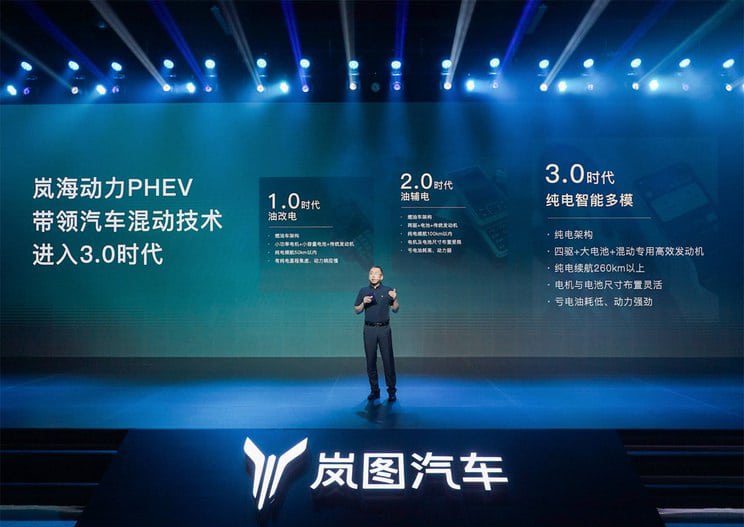 Voyah’s third generation PHEV technology being outlined
Voyah’s third generation PHEV technology being outlinedVoyah’s latest generation of Amber batteries come in 80, 110 and 112 kWh packs. Energy density is 212 Wh/kg and combined with an 800V platform can deliver ranges of 900 km. Mileage attenuation of the Amber 2.0 is less than 8% per million kilometres which is seven times better than the minimum national standard rate of 20% per 300,000 km. Amber 2.0 batteries also feature structural protection and thermal safety technology to achieve no water ingress, no leakage, no fire, no explosion, no thermal diffusion. They’ve undergone 20 industry-leading test and 1,200 experiments to ensure safety.
Voyah’s self-developed 5C super-fast charging x800V silicon carbide platform can allow the batteries to add 450 km of range in 10 minutes. Furthermore Voyah claims to have developed the world’s first 8C charger. Peak power is 1000 kW and it can add 500 km of range in just five minutes or 1.7 km per second. The charger has a 1000 A current.
 Voyah’s 8C supercharger
Voyah’s 8C superchargerIn addition Voyah announced improvements to its AI voice interaction system saying the new generation system has a voice recognition rated of 98% with a dialogue response rate of 550 ms and that the vehicle has an industry leading 1 second control response rate.
Also announced at the event was a new all electric SUV developed jointly by Voyah and Huawei which will launch later this year.
Source: Autohome
Yommie
Elite Member
- Oct 2, 2013
- 63,909
- 37,180
- Country of Origin

- Country of Residence

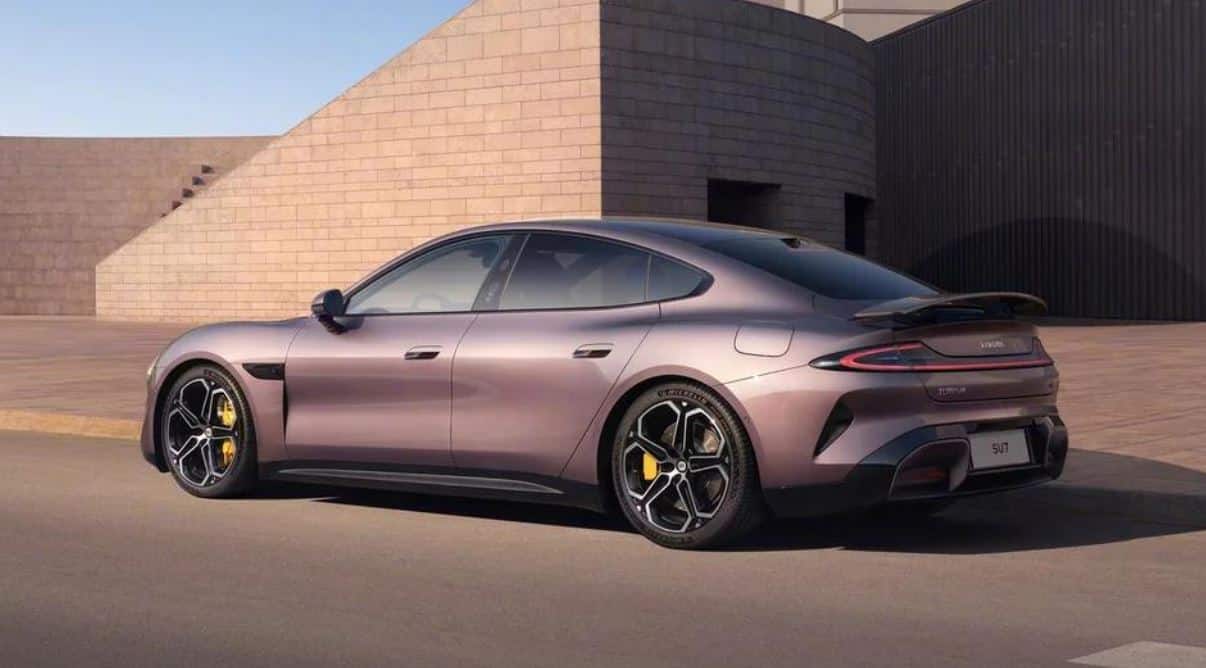
Xiaomi expects 5%-10% margin on SU7 with 100k unit sales
As of April 20th, SU7's firm order volume has exceeded 70,000 units.
 carnewschina.com
carnewschina.com
Xiaomi expects 5%-10% margin on SU7 with 100k unit sales
Reading Time: 2 minutes
Dong Yi Chen
April 25, 2024
0
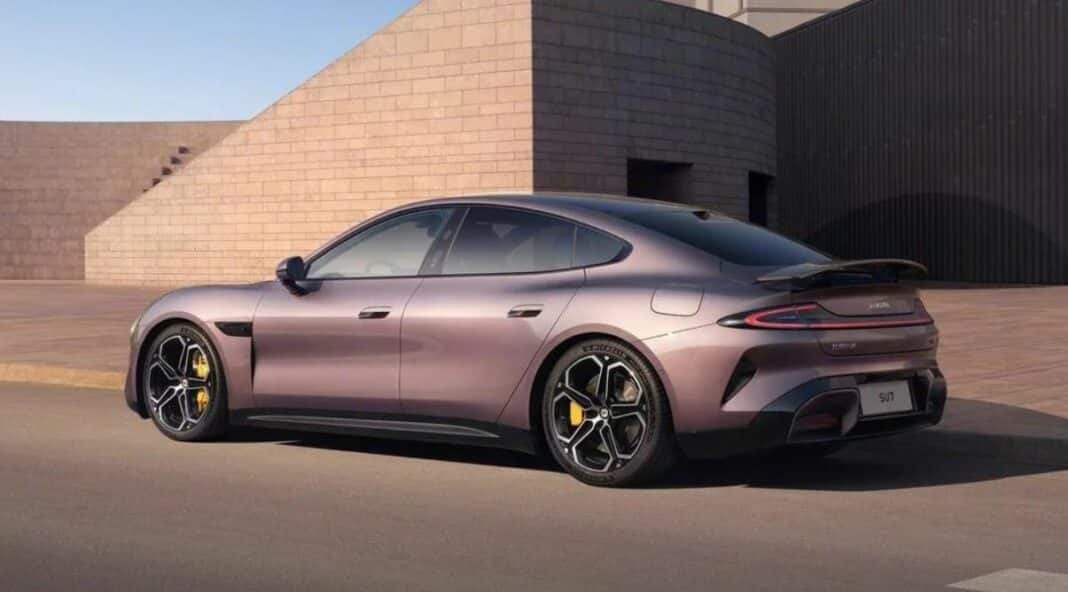
News like this to your inbox or phone?
Weekly summary to your inbox
I want this
Never miss and important news
Get Instant notification once the news is published.
Follow Us
Lei Jun, CEO of Xiaomi, shared that the gross profit margin of the Xiaomi SU7 is approximately 5% to 10% with good support from its suppliers, at Xiaomi’s 2024 Investor Day on April 23 in China. Lei Jun further added that the specific margin figures need to be confirmed again since the sales volume is much higher than expected.
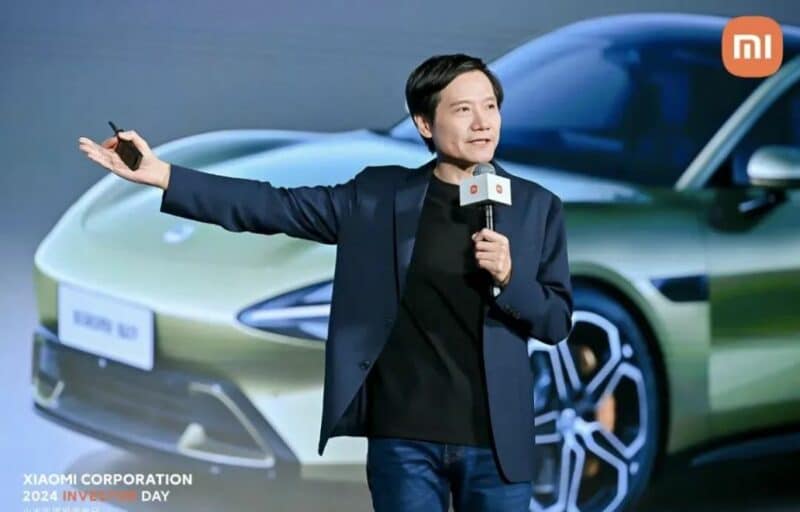
So far, as of April 20, Xiaomi SU7’s firm order volume has exceeded 70,000 units. The delivery target this year is 100,000 units. At first, Lei Jun’s personal goal was to sell 10,000 units per month and the original target was to deliver 72,000 units for the whole year. According to the Xiaomi Auto app, the current delivery cycle for the SU7 is 29 – 32 weeks, the SU7 Pro is 28 – 31 weeks, and the SU7 Max is 32 – 35 weeks.

Most recently, during the week of April 8th to April 14th, Xiaomi delivered 2,394 SU7s. According to vehicle insurance data, Beijing ranked first with 415 Xiaomi SU7s insured, followed by Hangzhou (166 units insured), Shanghai, Shenzhen, and Guangzhou.
| Ranking | Brand | Delivery Volume |
| 1 | BYD | 50822 |
| 2 | Li Auto | 7160 |
| 3 | Tesla China | 6212 |
| 4 | Aito | 4906 |
| 5 | Leapmotor | 3976 |
| 6 | Zeekr | 2677 |
| 7 | NIO | 2529 |
| 8 | Xiaomi | 2394 |
| 9 | Denza | 2222 |
| 10 | XPeng | 1611 |
It is also worth pointing out that Xiaomi’s daily production capacity is expected to increase to more than 400 units, and the monthly output is expected to reach 12,000 units, according to a Chinese source.
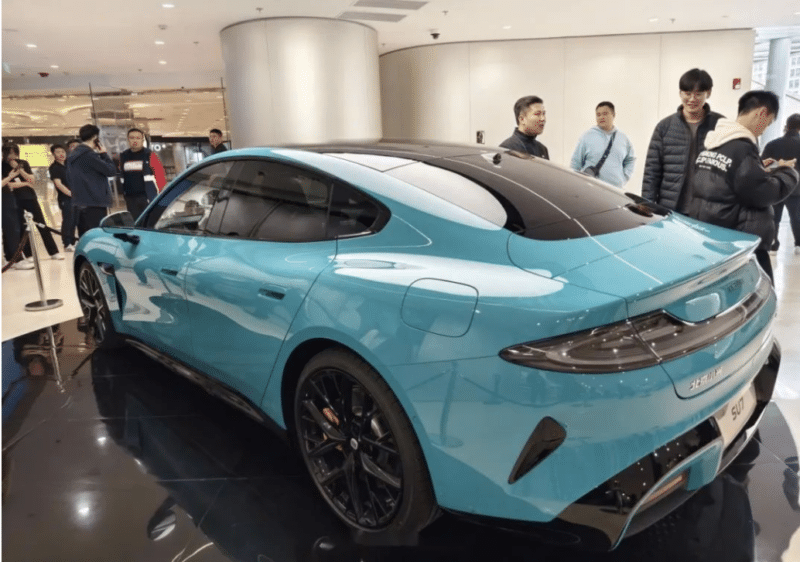
Right now, the deposit for the firm order is 5,000 yuan (690 USD). Amidst the competitive market, many brands are willing to subsidize the 5,000 yuan to attract more orders. So far, Luxeed offers a 5,000 yuan subsidy when customers present their Xiaomi SU7 firm order confirmation. NIO also seemed to follow at some NIO stores in which as long as the customer placed a firm order for an NIO model, NIO would subsidize 5,000 yuan and the firm order deposit could be refunded as well.
Source: MyDrivers, Sina, 36kr, AutoHome
Yommie
Elite Member
- Oct 2, 2013
- 63,909
- 37,180
- Country of Origin

- Country of Residence

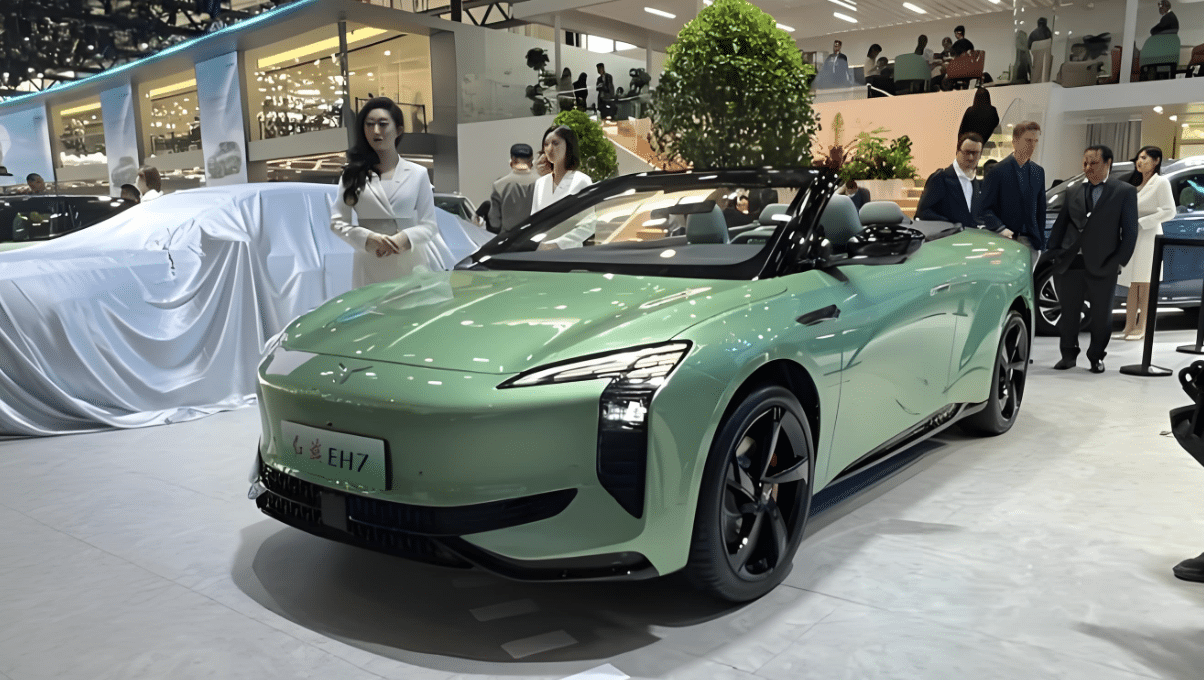
Hongqi EH7 convertible debuts at the BJ auto show
Hongqi, the luxury sub-brand under China's FAW Group, announced the official debut of the Hongqi EH7 convertible at the 2024 Beijing Auto Show. This new
 carnewschina.com
carnewschina.com
Hongqi EH7 convertible debuts at the BJ auto show
Reading Time: 2 minutes
Naveed Rastegar
April 25, 2024
1
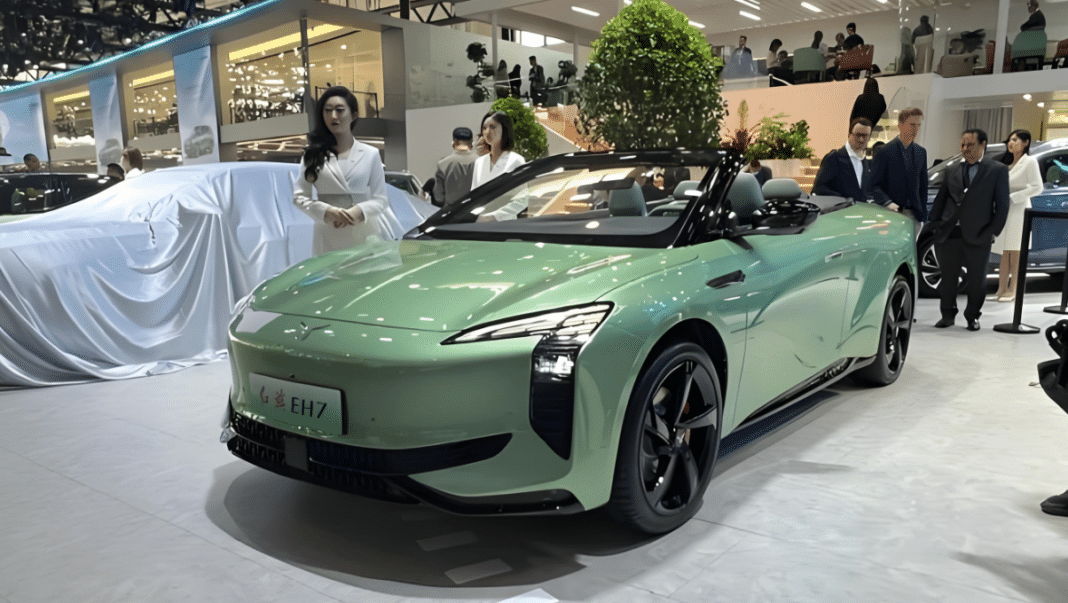
News like this to your inbox or phone?
Weekly summary to your inbox
I want this
Never miss and important news
Get Instant notification once the news is published.
Follow Us
Hongqi, the luxury sub-brand under China’s FAW Group, announced the official debut of the Hongqi EH7 convertible at the 2024 Beijing Auto Show. This new variant of the EH7 sedan adds a touch of open-top driving to the lineup, which was originally introduced on March 20 without this option. The convertible EH7 builds upon the success of its predecessor and carries forward the brand’s attitude.
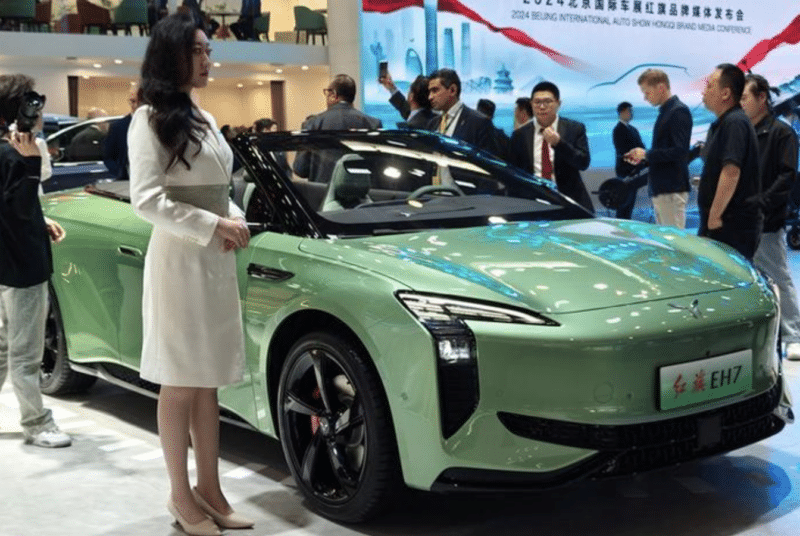
The Hongqi EH7 convertible retains the overall design of the standard EH7, featuring the signature closed grille design and the distinctive combination of the 7-shaped headlights, which have become the latest family design language for the Hongqi brand. The dimensions of the car measure 4980/1915/1490 mm, with a wheelbase of 3000mm.
The most eye-catching aspect of the convertible version is the effect when the roof is opened. With its unique body color options, the EH7 convertible stands out in the crowd.

Inside the vehicle, there is a strong emphasis on noticeable quality ehancements and a matching interior color scheme. The EH7 convertible is equipped with a 6-inch + 15.5-inch curved dual-screen display, along with an AR HUD (Augmented Reality Head-Up Display) system. Powered by the Snapdragon 8155 chipset, an impressive addition to the Hongqi brand. The interior follows a minimalist design approach, with hardly any physical buttons in sight. The steering wheel itself has a distinctive and sporty appearance, resembling a gaming controller. Additionally, the seats feature an integrated design, while the fresh interior color schemes create an overall futuristic and dynamic feel.
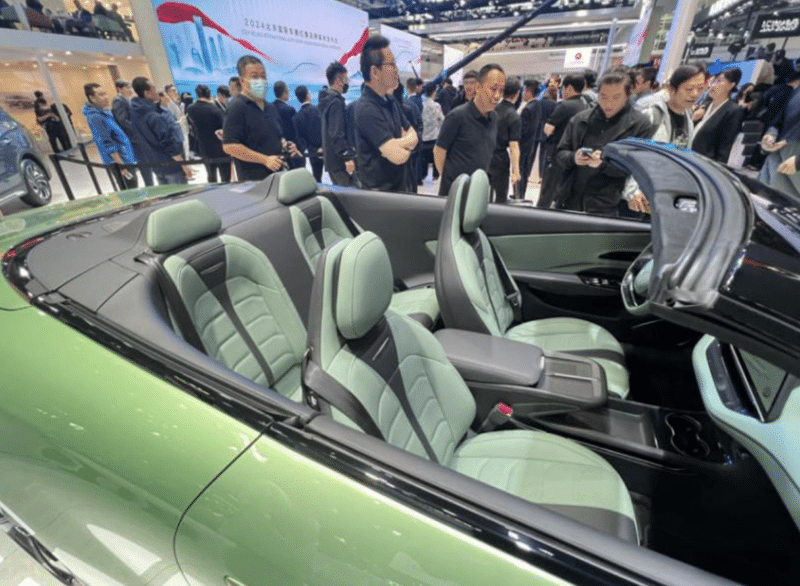
The EH7 convertible is available in both rear-wheel drive and four-wheel drive configurations. The ternary lithium battery packs, supplied by CATL, power the vehicle. The impressive acceleration time from 0 to 100 km/h is as fast as 3.5 seconds. It should be noted that the EH7 convertible is an upgrade to the existing EH7 lineup, which currently offers five models priced between 229,800 and 309,800 yuan (approximately 31,900 to 43,000 USD). With the introduction of the convertible variant, the prices are expected to increase accordingly.
Looking ahead, Hongqi plans to expand its new energy sub-brand further, with future offerings including battery-swap and long-range fast-charge variants, capable of achieving up to an 800 km range. With the EH7 convertible, Hongqi continues to showcase its attempts to make a name for itself in the luxury car market
Yommie
Elite Member
- Oct 2, 2013
- 63,909
- 37,180
- Country of Origin

- Country of Residence


Xiaomi SU7 sold 75,723 units 28 days after its initial launch
Xiaomi at the 2024 Beijing Auto Show
 carnewschina.com
carnewschina.com
Xiaomi SU7 sold 75,723 units 28 days after its initial launch
Reading Time: 3 minutes
Adrian Leung
April 25, 2024
5

News like this to your inbox or phone?
Weekly summary to your inbox
I want this
Never miss and important news
Get Instant notification once the news is published.
Follow Us
The 2024 Beijing International Automotive Exhibition kicks off today. In a press conference, Lei Jun, the Chairman and CEO of Xiaomi Group, revealed the Xiaomi SU7 secured lock-in orders (non-refundable deposits) of 75,723 units, with 5,781 units delivered as of 24 April, only 28 days after its initial launch.
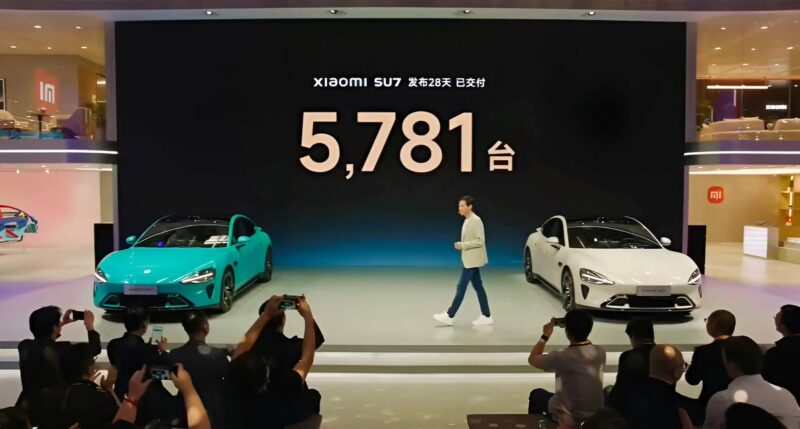
Lei Jun shared some demographic insights about the SU7 buyers. Among them, 28% are female, 29% currently drive BMW, Mercedes Benz, and Audi (the trio is known as BBA in China), and 51.9% are Apple users.
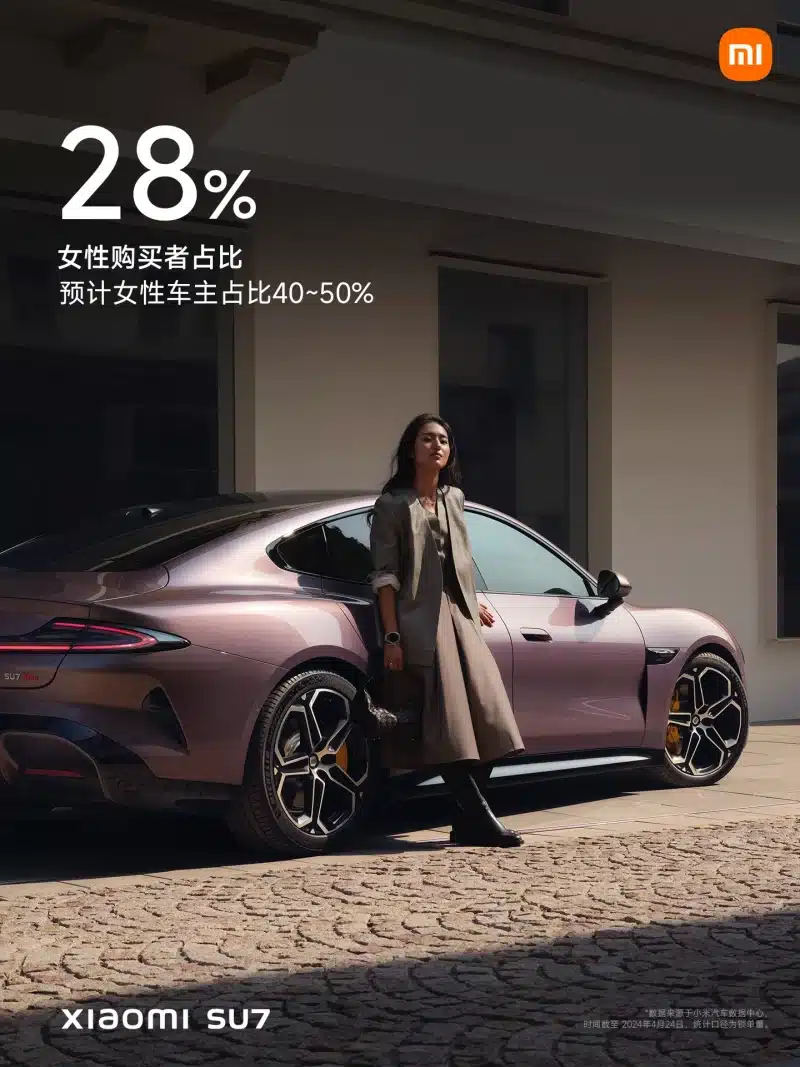
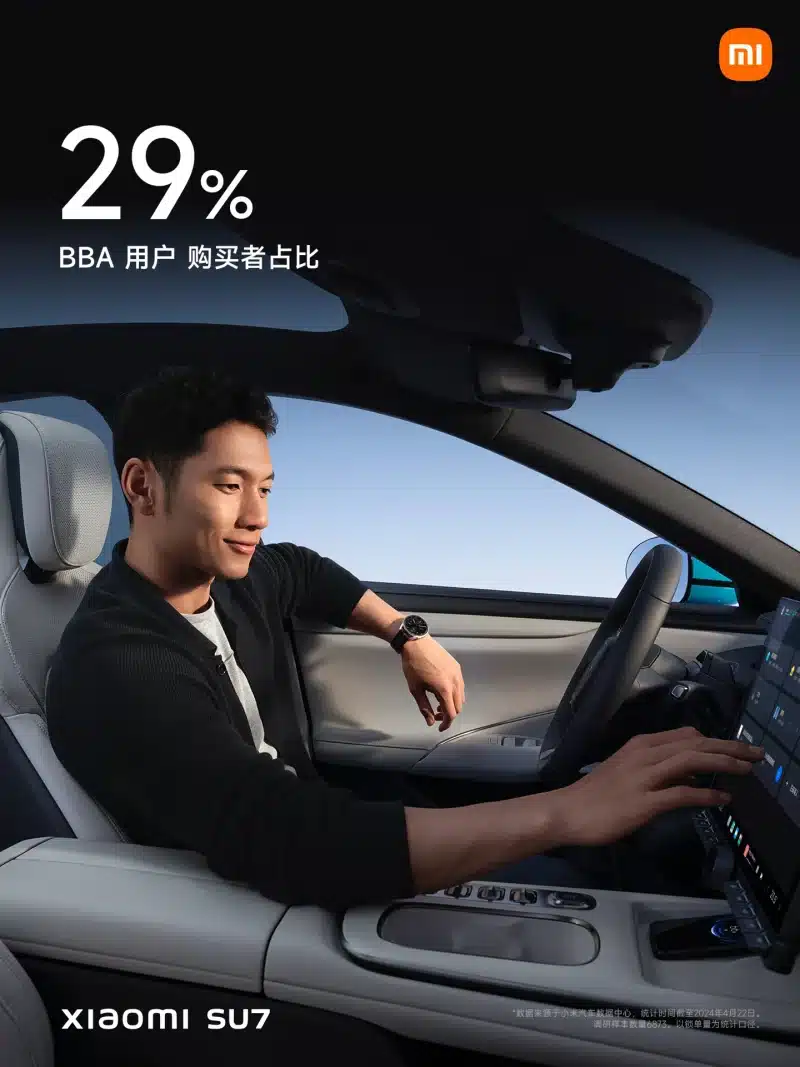

Lei Jun stated that Xiaomi is ramping up production for the SU7. Standard and Max versions started deliveries on April 18th, with the Pro version scheduled for late May. Xiaomi aims to exceed 10,000 monthly deliveries by June. The chairman emphasized that Xiaomi has manufacturing experience for 14 years despite being a new player as an automaker.
At the Zhejiang Car Race, an FIA-approved Grade 2 circuit, Xiaomi SU7 Max clocked a lap time of 1 minute 42.163 seconds while equipped with Pirelli PZERO 5 tires. It surpassed the Taycan Turbo S and Model S Plaid. When the tires changed up to Michelin Pilot Sport Cup 2R (semi-slick), the lap time shortened to 1 minute 38.043 seconds, rivaling the performance of Lotus Eletre R+.
The SU7 measures 4997/1963/1455 mm with a 3000 mm wheelbase. The Max variant has 495 kW power, 838 Nm torque, 0-100 km/h in 2.78 seconds, top speed of 265 km/h. Xiaomi claims a drag coefficient of 0.195 Cd for the SU7, the lowest among production vehicles.
For the upcoming OTA update, HyperOS 1.1.0 will introduce features like wireless CarPlay support, remote control parking, urban navigation, valet parking (beta), and four additional NFC wearables used as car keys.
HyperOS 1.2.0 is scheduled to roll out by the end of May. It will add features like advanced urban navigation (for ten additional cities), enhanced road surface perception, automated valet parking, blind-spot detection, adaptive HUD adjustments, and lane-keep assist.
The sales volume of the Xiaomi SU7 is a source of envy to legacy automakers, especially during a price war in Mainland China. Even the likes of Tesla and BYD have lowered their vehicle prices during the price war. Xiaomi’s strategic expansion plans include increasing the number of sales outlets and service centers to cover 46 cities with 219 stores and 86 cities with 143 service points by the end of 2024. At present, there is no stopping “flagship-killer.”
Yommie
Elite Member
- Oct 2, 2013
- 63,909
- 37,180
- Country of Origin

- Country of Residence

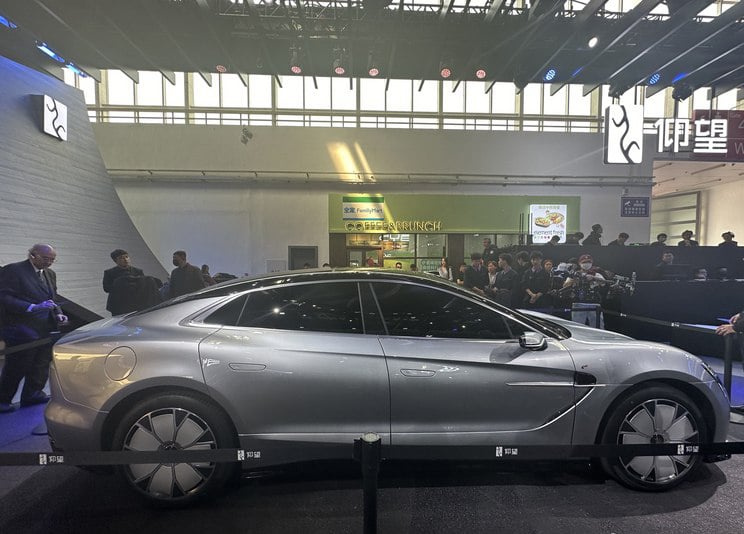
Yangwang U7 sedan unveiled at 2024 Beijing Auto Show
BYD brand YangWang unveils new U7 flagship electric sedan at the 2024 Beijing Auto Show. Sales likely to commence soon.
 carnewschina.com
carnewschina.com
Yangwang U7 sedan unveiled at 2024 Beijing Auto Show
Reading Time: 3 minutes
Mark Andrews
April 25, 2024
2
 YangWang U7 unveils at Beijing Auto Show
YangWang U7 unveils at Beijing Auto ShowNews like this to your inbox or phone?
Weekly summary to your inbox
I want this
Never miss and important news
Get Instant notification once the news is published.
Follow Us
Today BYD’s high end brand Yangwang unveiled its new flagship sedan the U7 at the 2024 Beijing Auto Show. BYD claim the Yangwang U7 will have the lowest drag coefficient among globally mass-produced cars with a figure of Cd 0.195.
At the front the car has a sleek look quite similar to that seen in the Yangwang U9 supercar and that is matched with a four door sedan shape. The U7 however is much bigger measuring in at 5265, 1998, 1517mm (l/w/h), and with a wheelbase of 3160 mm.
It has the same exaggerated C-shaped headlight cluster with an LED strip surrounding it as the U9. Also similar are the rib lines on the hood but the lower grille area is quite different and much flatter. The roof line has a Lidar unit.
On the side is a clear A shaped indentation which gradually tapers into just lines by the time it gets to the C-pillar. The rear haunches are considerably higher in keeping with the U7’s sporty looks. However, the rear ¾ is probably where the design is at its weakest and looks a bit awkward from this angle by the time it reaches the trunk. The tailgate has a through light just broken by the Yangwang logo. There should be an electrically adjustable spoiler.
As displayed the Yangwang U7 has cameras for side-view mirrors but the car has also been pictured with conventional mirrors and so it could be that the cameras are reserved for higher spec versions. Cameras would certainly help with the claimed low drag coefficient.
The car sits on the same e4 platform at the Yangwang U9 and will feature a new version of the DiSus suspension system DiSus-Z. In it the hydraulic shock absorbers are replaced with electric motors to give a feeling like you are riding on flat ground. BYD claim suspension has now gone from the oil era to the electric era. Adjustments can be made in as little as 10 ms. Furthermore the adjustments allow for energy recovery meaning that they can charge the battery.
Top speed is said to be 270 km/h and there are four electric motors powering it. The U7 is more powerful than the U9 and each motor has 326 horsepower for a total of 1306 horsepower. Weight is meant to be a very hefty 3.095 tons. Range is 800 km with a 135.5 kWh blade battery.
Yangwang U7 sedans come with a panoramic sunroof and there is an optional electronic rearview mirror. Also the U7 comes with the TianShen intelligent driving solution. In the U7 there are 3 Lidar units 5 millimeter wavelength radars and 13 cameras providing inputs and the computing system has 508 TOPS power.
Sales of the Yangwang U7 are likely to commence in the next few months.
Source: Autohome, Fast Technology
Yommie
Elite Member
- Oct 2, 2013
- 63,909
- 37,180
- Country of Origin

- Country of Residence

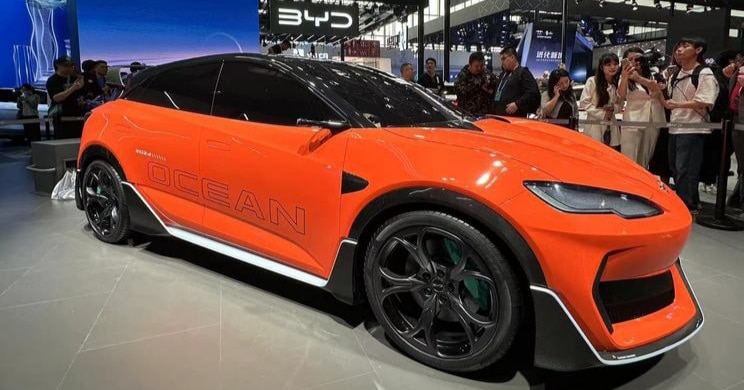
BYD unveil Ocean-M concept at 2024 Beijing Auto Show
BYD unveil Ocean-M concept at 2024 Beijing Auto Show. Concept previews new performance hatchback set to launch this year.
 carnewschina.com
carnewschina.com
BYD unveil Ocean-M concept at 2024 Beijing Auto Show
Reading Time: 2 minutes
Mark Andrews
April 25, 2024
1

News like this to your inbox or phone?
Weekly summary to your inbox
I want this
Never miss and important news
Get Instant notification once the news is published.
Follow Us
Today at the 2024 Beijing Auto Show BYD unveiled its new Ocean-M concept. The concept previews a new production car set to launch in the third quarter of this year. A radical looking hatchback it appears to be a bit bigger than the Dolphin and so is likely aimed more as a VW ID.3 competitor. Given the hatchback shape and looks it has almost certainly been designed with cracking the European market in mind.
At the front the concept features large headlights and an aggressively split lower lip around the air intakes. Riding on five spoke wheels the car looks quite sporty. Strangely for a hatchback the window line is very high and rises towards the back. Although the body kit will almost certainly not make it to production we can clearly still see quite edgy lines which will be inherited by the production version.


At the back underneath that huge wing are continuous taillights. Most likely the production car will slot into the BYD range somewhere between the Dolphin and Seal – no doubt with the name of another marine creature. Certainly initially the car will only be electric but a PHEV version might follow later.
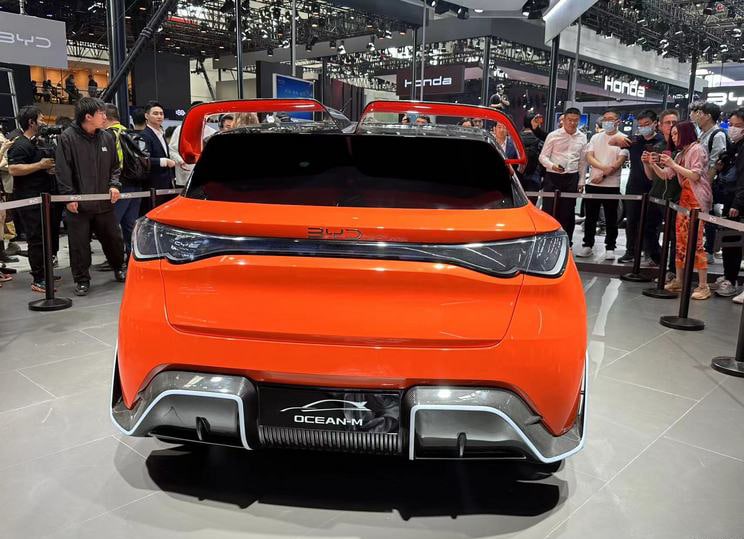
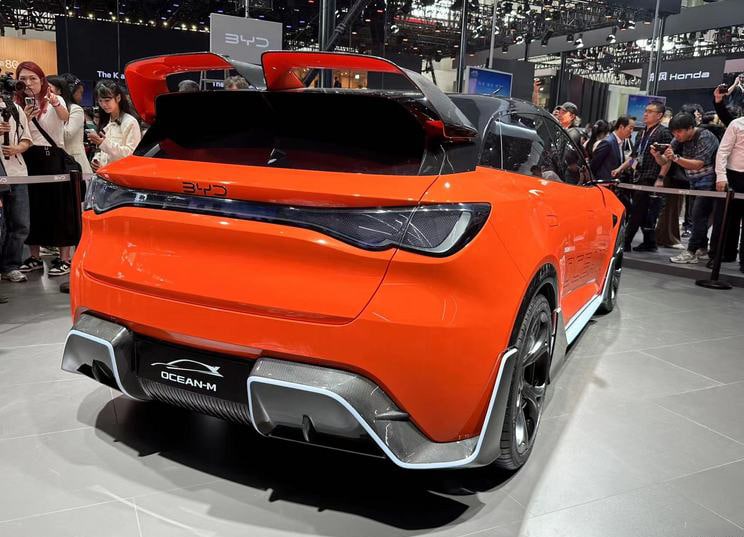
BYD has so far said little about the car other than it is meant to be on a new electric platform, possibly e-platform 4.0 and that they are aiming the car as the industry first rear-wheel drive EV hot hatch. It’s possible that the car may be one of the first to benefit from the new second generation blade batteries.
We will bring you more information about the car as we get it. BYD officials have said though that prices will be in the 150,000-200,000 yuan (20,700 to 27,600 USD) range.
Source: Autohome
Yommie
Elite Member
- Oct 2, 2013
- 63,909
- 37,180
- Country of Origin

- Country of Residence

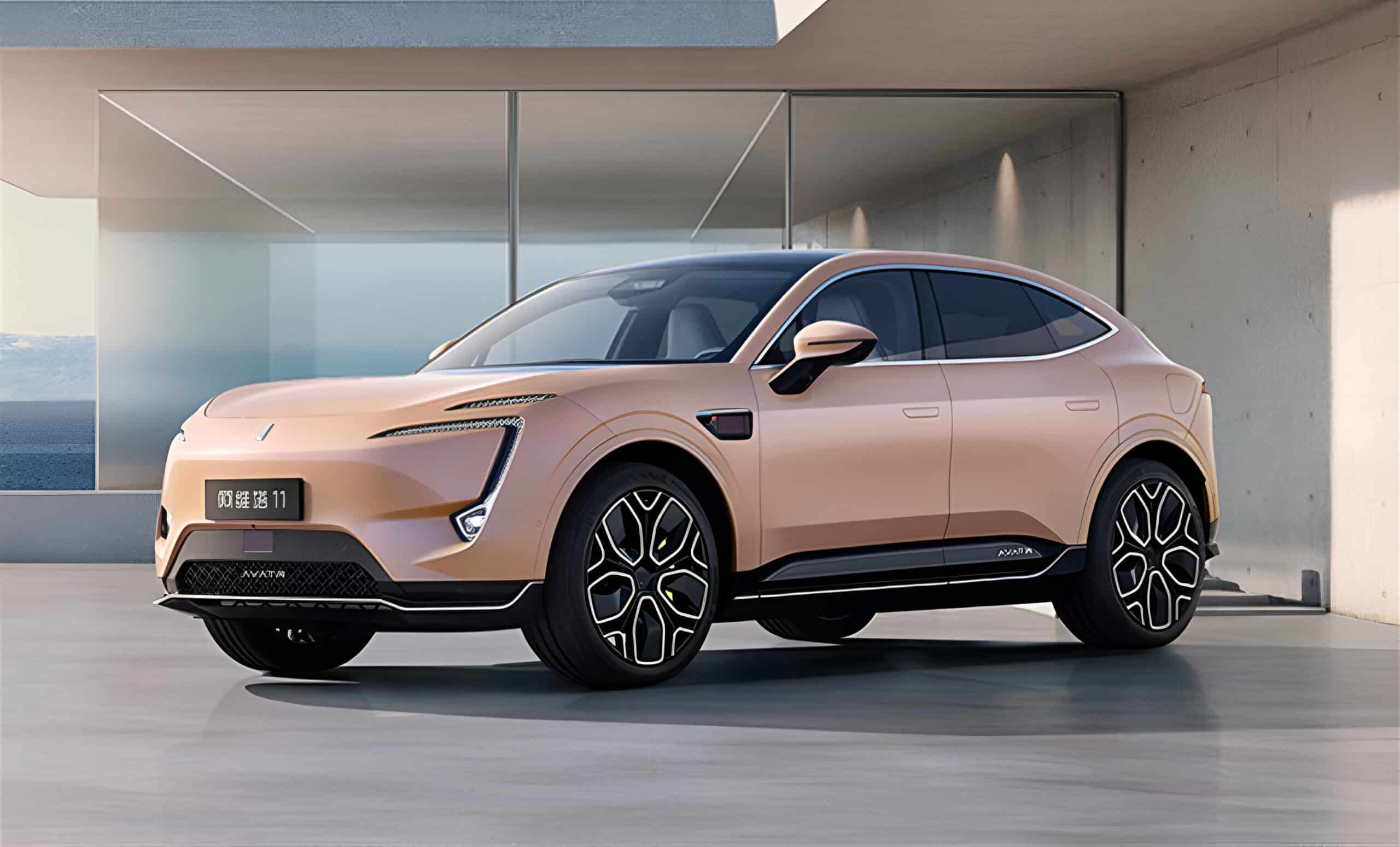
2024 Avatr 11 with significant luxury upgrades, starts at 41,500 USD
Avatr 11 is now offered in fluorescent gold
 carnewschina.com
carnewschina.com
2024 Avatr 11 with significant luxury upgrades, starts at 41,500 USD
Reading Time: 3 minutes
Adrian Leung
April 25, 2024
0
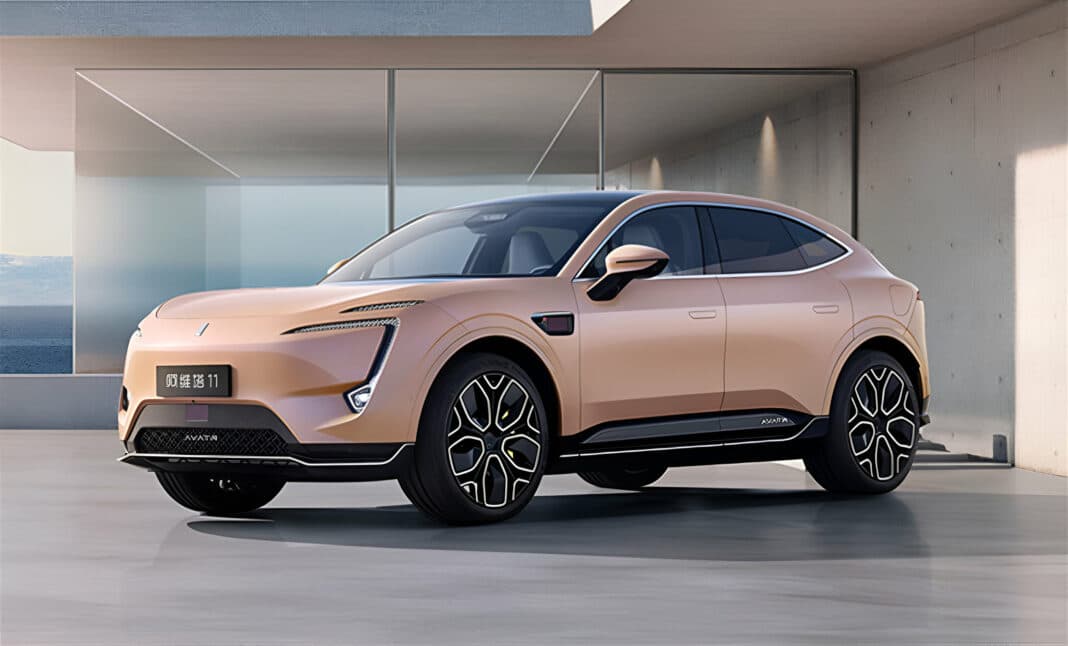
News like this to your inbox or phone?
Weekly summary to your inbox
I want this
Never miss and important news
Get Instant notification once the news is published.
Follow Us
The new Avatr 11 SUV was launched at the Beijing Auto Show today. The latest model is offered in four variants, ranging from 300,800 to 390,800 yuan (41,500 to 53,900 USD). The revised vehicle focuses on refinements instead of an overhaul.
- 630 RWD: 300, 800 yuan (41,500 USD)
- 580 AWD: 330,800 yuan (45,650 USD)
- 730 RWD: 330,800 yuan (45,650 USD)
- 700 AWD: 390,800 yuan (53,900 USD)
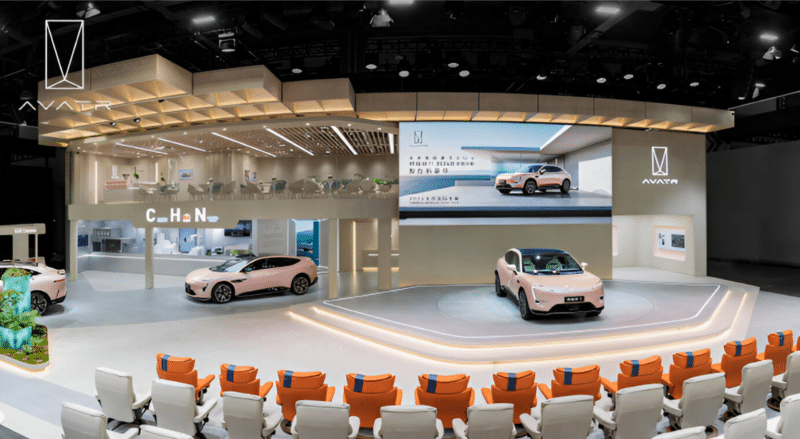
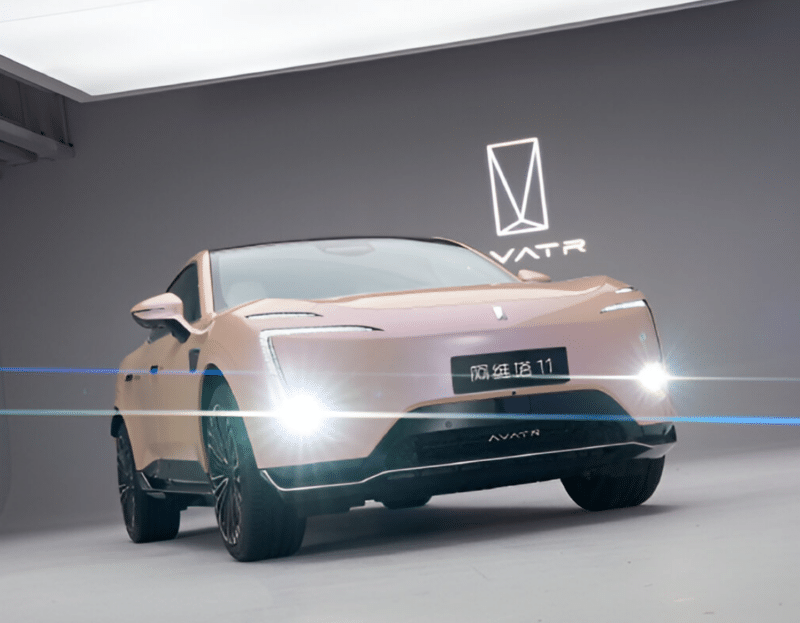
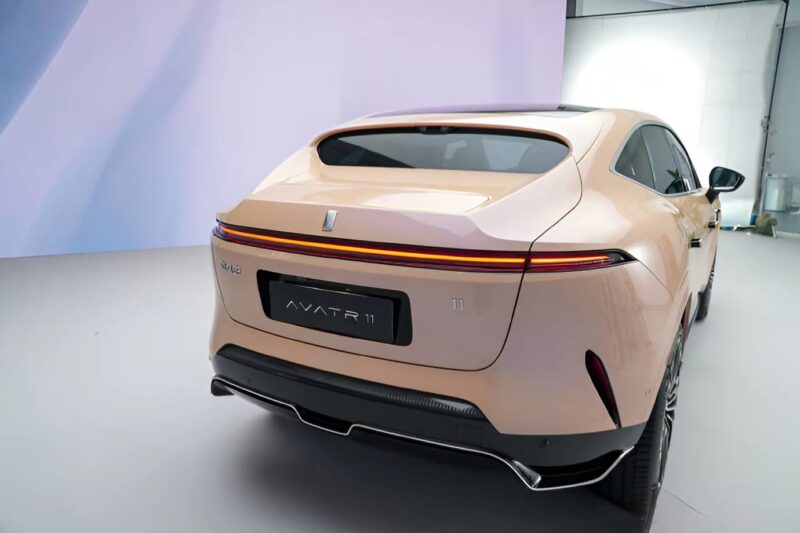
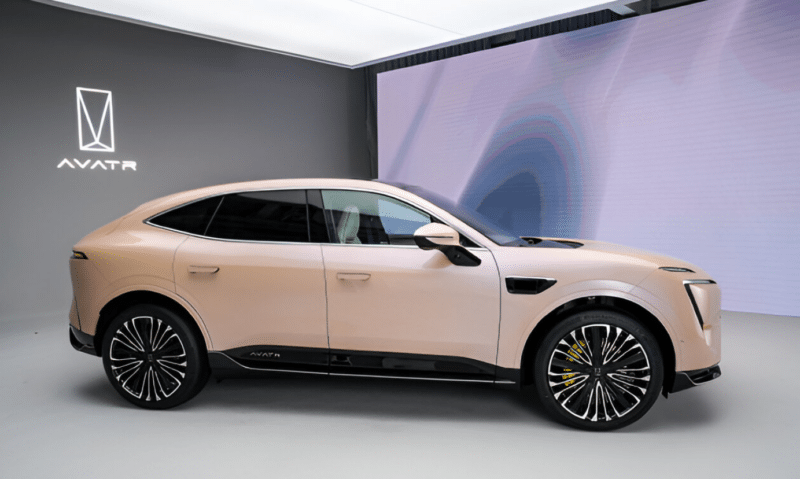
As introduced on the Avatr 12 last month, the Avatr 11 is now offered in the same fluorescent gold paint. This paint uses color-changing pigments that absorb specific wavelengths of light, varying the colors at particular angles. Based on the EP1 platform, Avatr 11 features single or dual motor options and range choices of 580 km to 730 km.
Huawei’s DriveONE powertrain offers single or dual motors with 230 kW to 425 kW power, 370 Nm to 650 Nm torque, and 0-100 km/h in 3.9 to 6.6 seconds. Battery options are 90 kWh or 116 kWh, with fast 750V charging.
The interior now features a purple/ white color scheme. Gold trims are also integrated to match the new fluorescent gold paint. The 15.6-inch central control screen supports split-screen functionality and displays navigation, games, and videos. It allows transferring windows to the co-pilot screen and recognizes voice commands. The 10.25-inch LCD instrument panel is also present.
All 2024 Avatr 11 vaiants now have a 25-speaker Meridian acoustic system as standard, creating a 7.1.4-channel surround experience. It also features China’s first PA3 DSP power amplifier platform with a 2016W power output.
The seats from the previous Avatr 11 were considered firm, causing discomfort for some during longer journeys. The 2024 model, however, features full-grain semi-aniline leather that is softer and offers improved breathability. Furthermore, all variants of the Avita 11 are equipped with front zero-gravity seats, while the rear seats provide ventilation and heating for a more luxurious ride.
The 2024 Avatr 11 models feature an all-around collision prevention system. The system comprises front AEB/GAEB, side ELKA/LOCP, and rear RAEB. The new side obstacle collision prevention (LOCP) utilizes the capabilities of the laser radar GOD network to enhance coverage and avoidance ability, resulting in a safer driving experience.
When traveling between 30km/h and 130km/h, the side obstacle collision prevention system (LOCP) assists the driver by steering the vehicle back to its original lane when an obstacle is detected. This prevents collisions during lane changing.
Avatr was founded in 2018 by Changan New Energy and Nio. Nio later withdrew and was replaced by CATL, which now owns 17% of the company. Changan holds 40%, and Huawei is the primary supplier. Avatr offers the Avatr 11 SUV and Avatr 12 hatchback.
Yommie
Elite Member
- Oct 2, 2013
- 63,909
- 37,180
- Country of Origin

- Country of Residence

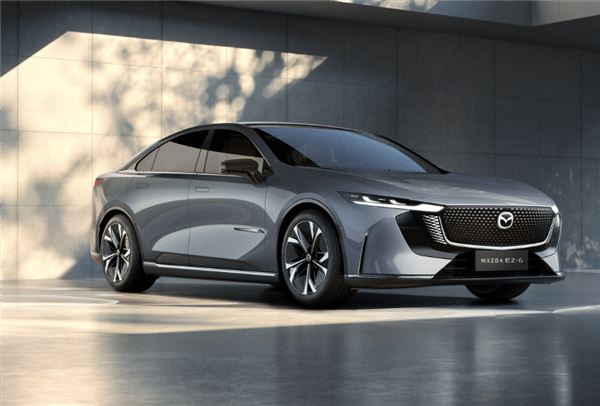
Mazda EZ-6 unveiled at 2024 Beijing Auto Show
Changan Mazda EZ-6 unveils at 2024 Beijing Auto Show. Electric and range extended Mazda 6 replacement heavily based on Deepal SL03.
 carnewschina.com
carnewschina.com
Mazda EZ-6 unveiled at 2024 Beijing Auto Show
Reading Time: 3 minutes
Mark Andrews
April 25, 2024
1

News like this to your inbox or phone?
Weekly summary to your inbox
I want this
Never miss and important news
Get Instant notification once the news is published.
Follow Us
Today the Changan Mazda EZ-6 debuted at the 2024 Beijing Auto Show. If you’re wondering why we are saying Changan Mazda, well the car is heavily based on the Deepal SL03 from Changan and currently it is not clear whether the car will sell outside China. The Mazda EZ-6 is believed to be a replacement for the Mazda 6 and will come in both pure electric and range extended versions and will likely launch later this year.
Although the base car Deepal SL03 is clearly visible in the look of the new car, it is not simply a case of badge engineering. At the front the EZ-6 gains a Mazda looking grille and has a general Mazda family face.
Frameless doors and hidden door handles are inherited from the Deepal SL03 but the Mazda EZ-6 does manage to carve out some individuality for itself at the side even if it does seem to share the same crease lines. First of all it has a much smoother window line without the kink that the SL03 has. This means that the window between the C and D pillars is larger. Equally the Mazda appears more graceful than the quite sharp Deepal. At the rear the sharp angle of the Deepal is ironed out leading to a much smoother look. Also gone is the kink on the tailgate and the general finish of the panoramic roof meeting the tailgate seems far better executed.
While the basic setup of 14.6-inch floating center screen, an LCD instrument panel along with flat bottomed steering wheel remain the interior seems at least in the artwork more refined. A charcoal and tan color scheme adds a touch of class.
Mazda EZ-6 interior artwork and shots from the show
Inside there’s a wireless mobile phone charging pad, two cup holders, a Sony sound system, and a zero-gravity seat for the front passenger. Functions seems almost exclusively controlled through the screen or voice command. Powering the cockpit is a Qualcomm Snapdragon 8155 chip.
So far there is no news on the powertrain. However, the Mazda EZ-6 will likely have a setup comparable to the Deepal SL03. For the range extended version that means a 1.5 liter engine as the extender and rear mounted electric motor with maximum power of 175 kW and with 320 Nm torque. A Mazda version might use a Mazda engine to act as the range extender. All electric versions of the Deepal SL03 come with either a 160 or 190 kW motor on the rear axle. It is possible that the Mazda will have more powerful motors or even introduce a dual motor version to go with Mazda’s sportier image.
Source: Fast Technology
Users who are viewing this thread
Total: 1 (members: 0, guests: 1)
Pakistan Defence Latest
Country Watch Latest
-
Not just engines, Tejas Mk-1A delivery could be hit over key Danish part, now on export blacklist (3 Viewers)
- Latest: TheAmerican
-
-
-
-
Egyptian EJun 30 SW, Akinci and the relationship with the United Arab Emirates (2 Viewers)
- Latest: Sami_1
Latest Posts
-
Hundreds of Hezbollah fighters injured after their pagers/phones explode in presumed Israeli operation (36 Viewers)
- Latest: Circadian Rhythm
-
Not just engines, Tejas Mk-1A delivery could be hit over key Danish part, now on export blacklist (3 Viewers)
- Latest: TheAmerican
-
-
-


